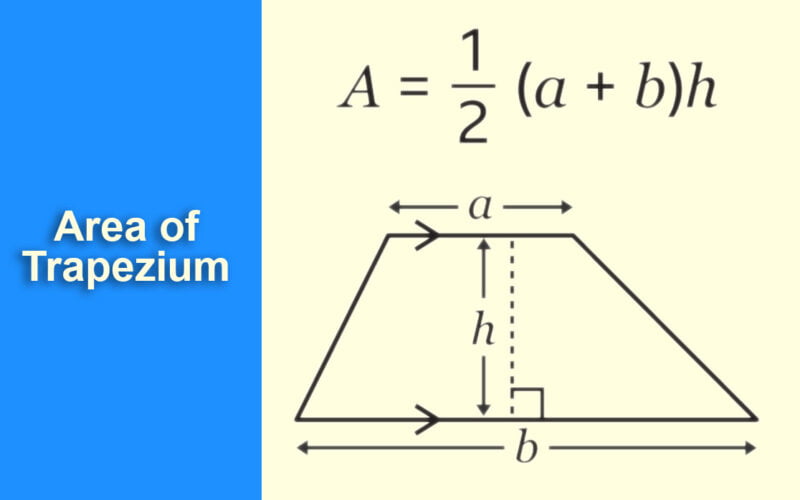
Welcome to our comprehensive guide on the area of a trapezium! In this article, we will explore the intricacies of this fascinating geometric shape and delve into its mathematical properties. Whether you’re a student seeking to understand trapeziums for academic purposes or simply curious about the mathematics behind them, we’ve got you covered. So, let’s embark on this journey of discovery!
A trapezium, also known as a trapezoid in North America, is a quadrilateral with one pair of parallel sides. To understand its area, we need to examine its unique characteristics and the formula used for calculation.
A trapezium is defined by the following properties:
The area of a trapezium can be calculated using the following formula:
Area = (1/2) × (sum of parallel sides) × (distance between parallel sides)
Let’s take you through the step-by-step process of calculating the area of a trapezium.
Before we begin, identify the two parallel sides of the trapezium and the distance between them, which is referred to as the “height” of the trapezium.
Take the sum of the lengths of the parallel sides and write it down.
Multiply the sum obtained in Step 2 by half (1/2).
Now, multiply the result from Step 3 by the height of the trapezium. This will give you the area of the trapezium in square units.
Don’t forget to include the appropriate unit (e.g., square centimeters, square inches) to represent the area.
To grasp the concept better, let’s work through a couple of examples that demonstrate how to calculate the area of a trapezium.
Consider a trapezium with parallel sides measuring 8 centimeters and 12 centimeters and a height of 6 centimeters.
Area = (1/2) × (8 + 12) × 6 = 60 square centimeters
Now, let’s examine a trapezium with parallel sides measuring 15 inches and 20 inches, and a height of 10 inches.
Area = (1/2) × (15 + 20) × 10 = 175 square inches
Trapeziums might seem like abstract geometric shapes, but they have several real-life applications. Understanding the concept of the area of a trapezium can prove beneficial in various fields:
A: A trapezium in the UK and other countries refers to a quadrilateral with one pair of parallel sides. In North America, a trapezoid is defined as a quadrilateral with at least one pair of parallel sides.
A: No, not all trapeziums are symmetrical. Trapeziums can have non-parallel sides of different lengths, resulting in asymmetry.
A: Yes, a trapezium can have more than one right angle, but it must have one pair of parallel sides.
A: The key difference is that parallelograms have both pairs of opposite sides parallel, whereas trapeziums have only one pair of parallel sides.
A: Yes, a trapezium can have equal-length sides, known as an isosceles trapezium.
A: Accurate calculations of the area of a trapezium are crucial in various fields, such as construction, architecture, and engineering, as it helps in determining quantities of materials required and associated costs.
In conclusion, understanding the area of a trapezium is an essential aspect of geometry with practical applications in diverse fields. By following the step-by-step guide and grasping the concept’s intricacies, you can confidently calculate the area of any trapezium you encounter. Whether you’re a student, professional, or simply curious, we hope this article has enriched your knowledge and provided valuable insights into the fascinating world of trapeziums.
Recommended other topics: Area of Square-Understanding the Fundamentals










© InfoDoot. All Rights Reserved.